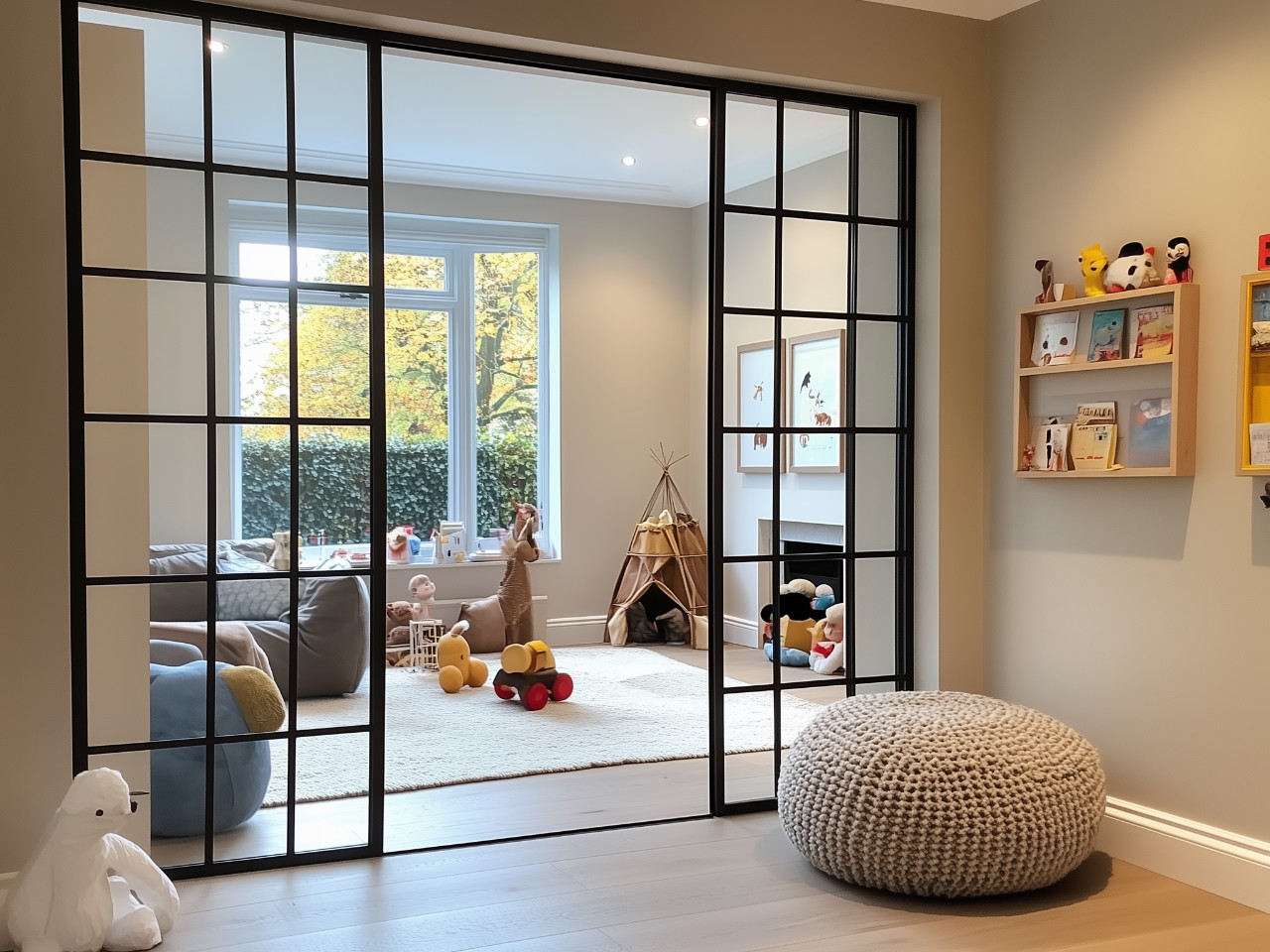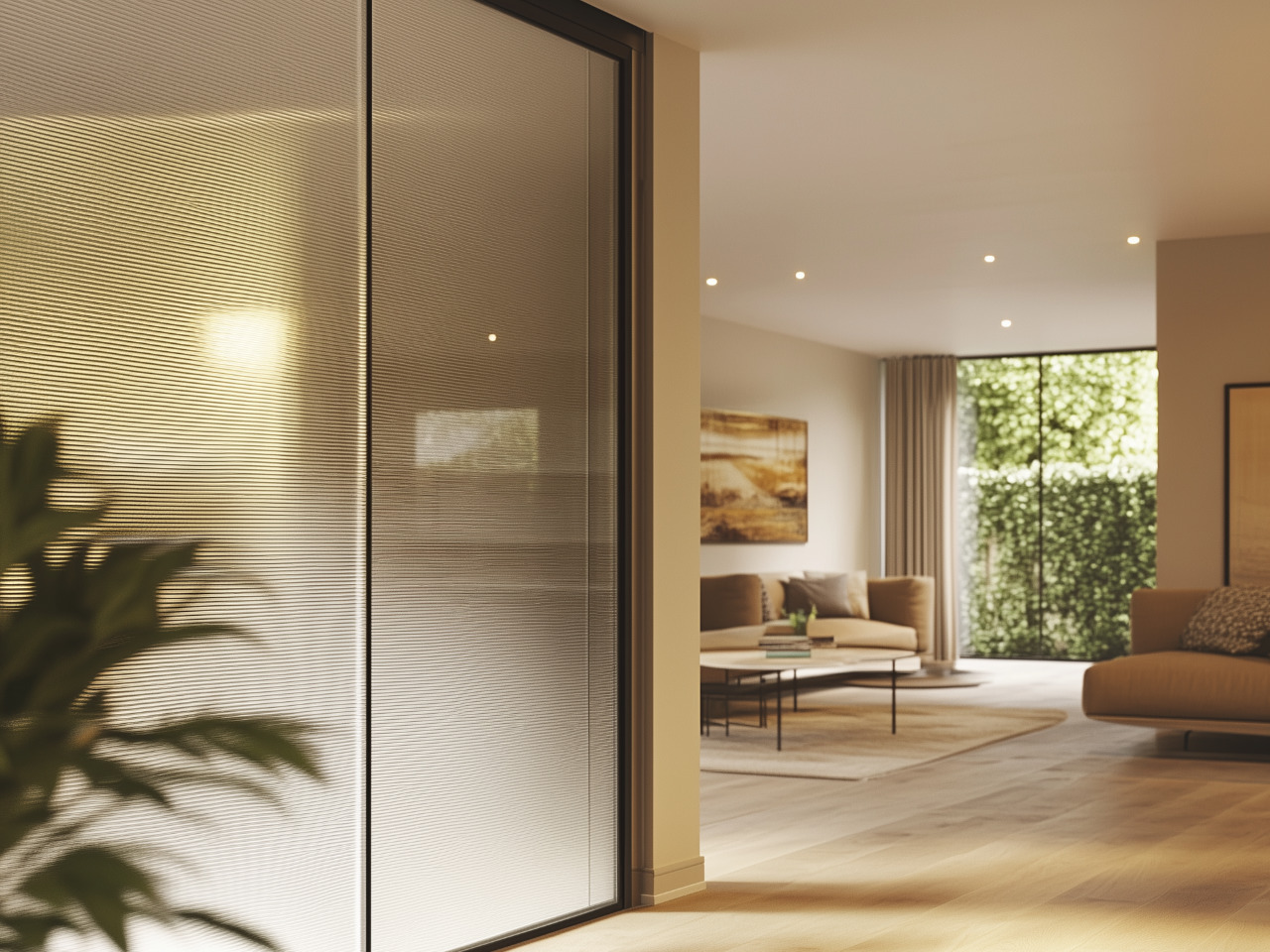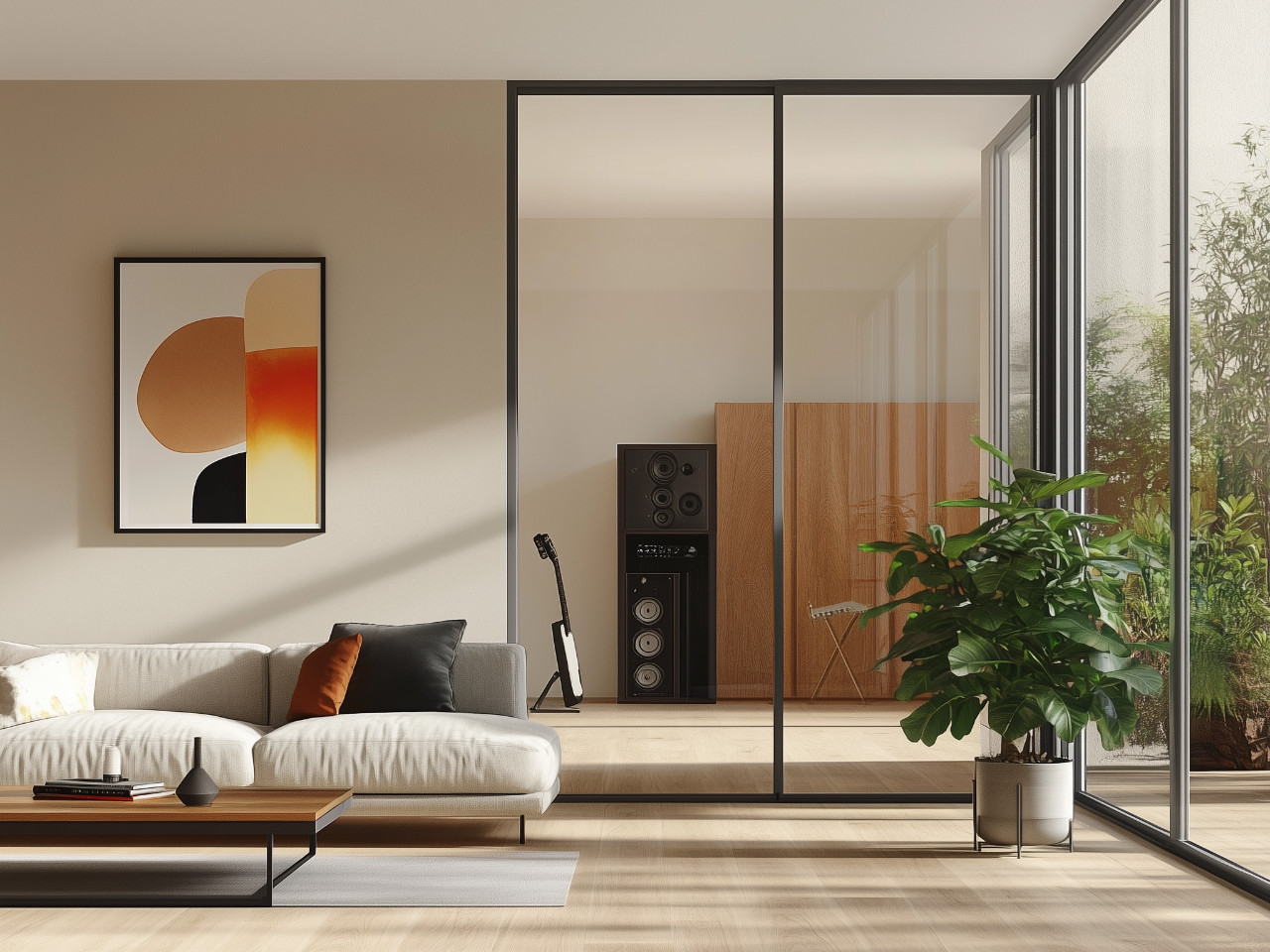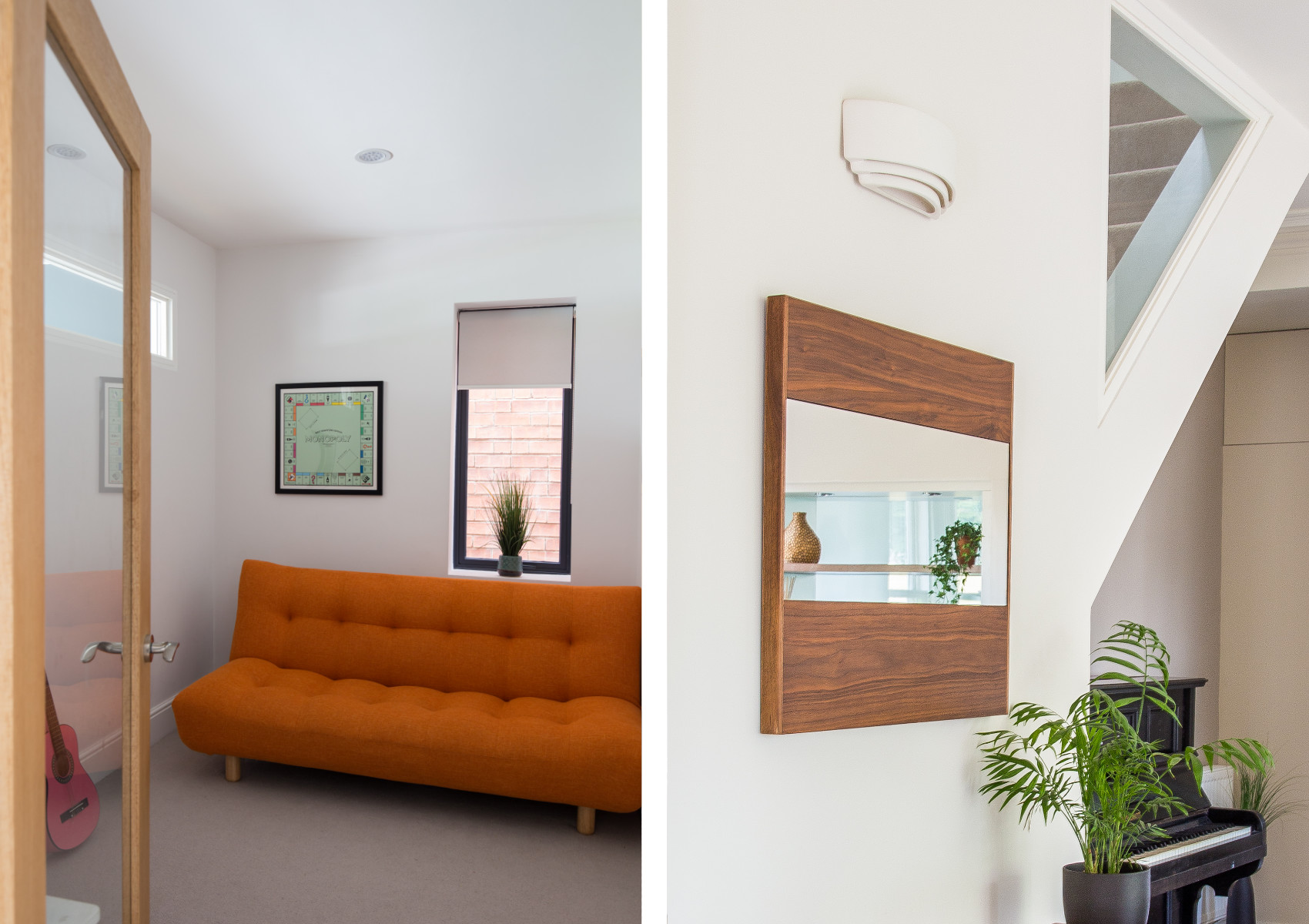Transform Your Space with Internal Glazing

Internal glazing is a design element that can completely change the feel of your home. By strategically placing sections of glazing, you can create a sense of openness and connection between rooms without sacrificing the practical elements of separate spaces.
Here, we’ll explore the benefits, potential challenges, and some of the best spots in your home to use internal glazing as an alternative to solid walls and doors.
SHARE LIGHT BETWEEN SPACES
One of the biggest advantages of internal glazing is its ability to share light between two rooms – something a solid wall simply can’t do. This can be especially valuable in homes where certain rooms have limited natural light, or an extension to the property creates a dark space in the centre of the house.
By adding a glazed window or glazed doors, you can borrow light from a brighter room, and create a brighter, more welcoming atmosphere throughout your home.
This double sided glass bookcase is from our Into Space project. Click to see more from this project.
CREATE INTERNAL VIEWS
Another benefit of using glass to separate spaces in your home, is creating visual connections between spaces.
When re-modelling your home, don’t just focus on the placement of external windows and doors, think about the internal views you will experience. These lines of sight throughout the home are extremely important, especially in countries where winter brings dark evenings.
A glazed panel allows you to maintain a line of sight between rooms, unlike a solid wall. This can make your home feel larger and more cohesive, adding interest and preventing spaces from feeling isolated.
FEEL CONNECTED
The use of internal glazing, can make all the difference in preventing spaces from feeling confined and separated from the rest of the house. By allowing a line of sight between rooms, you maintain the flow of the home while still keeping functional divisions between areas.
This is particularly effective in areas like playrooms, where children enjoy being able to see what’s happening in the rest of the house, but glazed doors allow some of the noise and chaos to be muted.

IDEAL SPOTS FOR INTERNAL GLAZING
There are many creative ways to incorporate internal glazing into your home. Here are a few ideas:
- Dark central rooms: If you have a room in the middle of your house, lacking natural light, a high pillar-box glazed panel can be an ideal solution. You get the benefits of borrowed light, but retain privacy and the ability to use the wall for storage or artwork.
- Staircases: Adding glazing into a staircase wall can create a sense of openness and allow light to spill through what might otherwise be a dark corridor.
- Study Nooks: Internal glazing can offer a sense of separation for a home office while keeping a connection to other living spaces. This is perfect for those working from home who want a quieter area without feeling isolated.
- Playrooms: A partially glazed wall can be a great solution to create some zoning and a separate space for toys and playthings to go, without losing connection and visibility.
The high pillarbox window in this playroom is from our Family Time project. Click to see more from this project.
POTENTIAL DOWNSIDES TO CONSIDER
Of course, there are a few things to keep in mind before committing to internal glazing:
- Reduced Privacy: While internal glazing offers separation, it doesn’t provide the same level of privacy as a solid wall or door. This might be a concern in spaces like home offices where a little more seclusion is required.
Solution: Orient the desk so that the screen cannot be seen from the glazed panel.
- Sound Transfer: Internal glazing won’t offer the same sound insulation as a solid wall. This means sound can travel more freely between spaces, which might be a consideration if you’re using it to separate a noisy area, like a living room, from a quieter space, like a study.
Solution: Use double glazing, which is more effective at reducing noise transfer.
- Fire Rating: It’s is important to check if your doors or glazing panels need to be fire rated – your architect or contractor should be able to advise, and this may impact the design options available to you.
Solution: Many areas in your home will not need fire rated doors, but if you do, ensure to choose from available options which have the correct rating. No clever solutions for this one – safety always comes first, over design!
- Maintenance: All glazing requires regular cleaning to keep it looking its best. Fingerprints, smudges, and dust are more visible than they would be on a solid wall, so it may require more upkeep to maintain its sleek appearance.
Solution: Windows out of reach avoid finger marks, and glazing in shaded areas, out of direct sunlight, will show marks up far less.
- Light Control: Unlike a solid wall, internal glazing means you can’t fully block light between spaces. While this is a plus for some areas, it might not be ideal for rooms where darkness is sometimes needed, like a bedroom or a home cinema.
Solution: Add a recessed roller blind, to manage the light transfer.

CONCLUSION - A LIGHT, CONNECTED HOME
Creating visual connections between spaces is a crucial consideration when designing interior layouts. It can be the difference between a dark home, and a light-filled, connected home that still respects the need for individual spaces.
Whether you want to brighten up a dark hallway, visually link the playroom to the living space, or add interest to a staircase, glazing can really change the feel of the space. Just remember to weigh the pros and cons to ensure they suit your specific needs and lifestyle.




